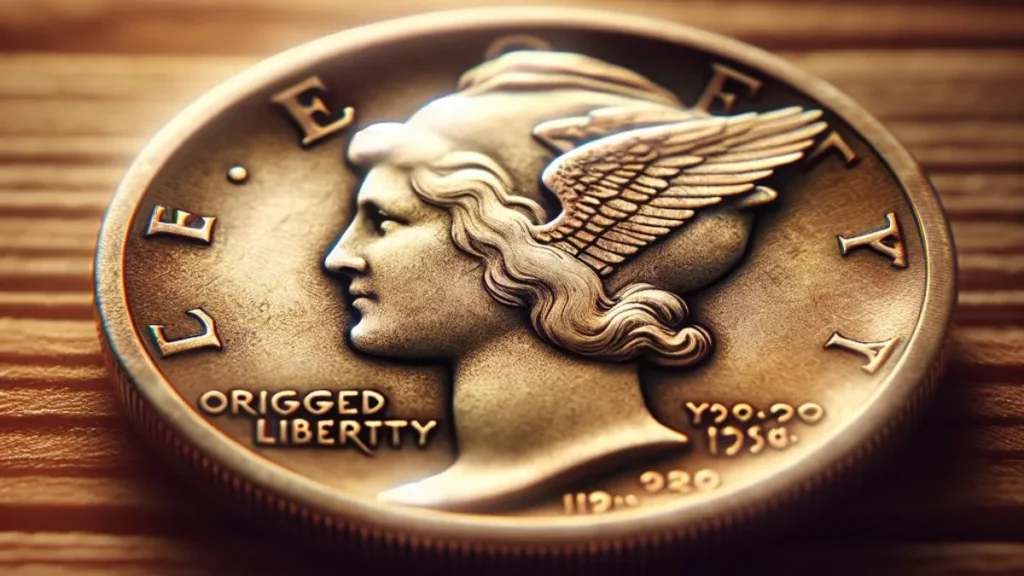
Contents
- 1 Introduction
- 2 Historical Background of the Mercury Dime
- 3 Understanding the Meaning Behind the Design
- 4 Minting and Circulation
- 5 Conclusion
- 6 FAQs about What is the Meaning of Silver Dime Mecury Meaning
Introduction
The “silver dime” period usually refers to the U.S. Dime coin product of ninety silver, minted from 1796 till 1964. The Mercury dime, officially known as the Winged Liberty Head dime, was produced between 1916 and 1945. This coin depicts Liberty, regularly mistaken for the Roman god Mercury due to its winged cap, symbolizing the freedom of notion and the pursuit of progress. The significance of the Mercury dime extends past its monetary price; it represents a pivotal moment in U.S. Records, artistry, and coinage design. Understanding its meaning includes appreciating its inventive benefit, historical context, and collectors value.
Historical Background of the Mercury Dime
The Mercury dime was designed by famous sculptor Adolph A. Weinman, who was commissioned to create a brand new layout for the dime in 1916. This changed into part of a broader wave of reforms in American coinage aimed at modernizing and improving the aesthetic attraction of U.S. Currency. The coin functions as a left-dealing with the bust of Liberty sporting a winged cap, which symbolizes liberty and freedom, and the opposite depicts an olive branch and a fasces, representing peace and strength, respectively. The combination of these factors reflects the values that the United States aimed to encompass at some stage in time of each World War and home changes.
Understanding the Meaning Behind the Design
Liberty Depiction
Liberty preference is because the number one discernment at the Mercury dime indicates more than a patriotic image; it displays the beliefs of democracy and freedom. Liberty winged cap is a feature that attracts direct influences from classical antiquity, linking American beliefs back to the historic Roman thought of free concept and progress.
Symbolism of the Olive Branch and Fasces
The olive branch, an ancient symbol of peace, indicates that America wishes for international balance. Meanwhile, the fasces, a package deal of rods with an axe, represent cohesion and strength in governance. Together, these symbols on the opposite side of the coin underscore the twin aspirations of peace and resilience.
Minting and Circulation
Circulated extensively at some point in the early to mid-twentieth century, the Mercury dime was produced across numerous mint facilities, including those in Philadelphia, Denver, and San Francisco. The coin is composed of 90% silver, meaning that it holds a significant intrinsic fee, mainly during periods of economic strife, such as the Great Depression. Collectors relatively cost each the common and uncommon dates, with certain mint marks commanding premium expenses among fanatics.
Collector Interest
The truth about the Mercury dime is that its artistry and history have fostered a sturdy collector hobby. Various factors, including its mint mark, 12 months of minting, and circumstance, affect a coin price. For example, the 1916-D Mercury dime is one of the most famous, as fewer than 300,000 have been produced, making it a true rarity.
Conclusion
Undoubtedly, the Mercury dime stands as a testimony to American artistry and the enduring values of liberty and power. Understanding its means includes exploring its historical context, inventive importance, and status within numismatic collections. Whether you are an informal collector or an extreme numismatist, the legacy of the Mercury dime gives rich insights into what America is beyond and its beliefs.
FAQs about What is the Meaning of Silver Dime Mecury Meaning
What does the Mercury dime represent?
The Mercury dimes design represents the ideals of liberty and freedom. On its front, Lady Liberty symbolizes democracy, and on the reverse, a paired olive branch and fasces characterize peace and strength.
Why is it called the Mercury dime?
While it is normally called the Mercury dime due to its depiction of Liberty with a winged cap resembling the Roman god Mercury, it is officially named the Winged Liberty Head dime.
When turned into the Mercury dime minted?
The Mercury dime was minted from 1916 to 1945, during which time it became a critical part of daily trade in the United States.
What is the value of a Mercury dime?
The fee of a Mercury dime can vary drastically, depending on its condition and rarity. As of New Year, many may be discovered for between $1 and $5, while uncommon issues can command hundreds or even thousands of bucks at public sale.
How can I tell if my Mercury dime is precious?
To determine the value of your Mercury dime, look at the year, mint mark, and condition. Consult respected coin guides or seek an appraisal from a licensed numismatist for a more accurate valuation.

Say Job City in Pakistan for today latest jobs opportunities in private and Govt departments. View all new Government careers collected from daily. sayjobcity.com


